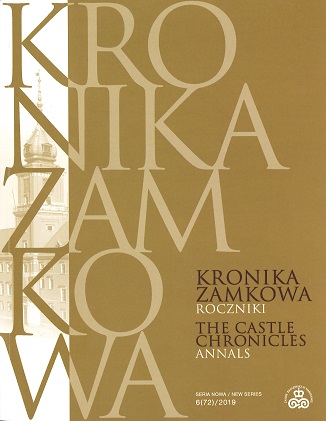Bernardo Morando. Pochodzenie i edukacja budowniczego Zamościa.
Bernardo Morando. Orgin and Education of the Constructor of Zamość
Author(s): Andrzej FilipSubject(s): Fine Arts / Performing Arts, History of Art
Published by: Arx Regia® Wydawnictwo Zamku Królewskiego w Warszawie – Muzeum
Keywords: Morando Bernardo; Chiaramella da Gandino Francesco; Parr / Pahr family; Zamość – an ideal city; Renaissance urban planning; bastion fortifications; Warsaw Castle; Anna Jagiellon’s court
Summary/Abstract: The first part of the article analyses earlier h ypotheses concerning the origin of Bernardo Morando, the constructor of Zamość, linking him to the cities of Venice or Padua. These hypotheses consider Morando as the creator of an “ideal city”, educated in the major intellectual and artistic centres of Italy. However, none of them, in the context of the available historical sources, can be considered sufficiently plausible. The second part of the article indicates and discusses new historical records, in light of which Morando grew up in Verona, in the Morando da Gandino family. The third part is devoted to Morando’s education. He most probably gained his first professional experience in the circle of Michele Sanmichele and then around Francesco Chiaramella Morando da Gandino, chief military engineer of the House of Hohenzollern. In Brandenburg and Mecklenburg (where Chiaramella collaborated with builders from the Parr / Pahr family), Morando could acquire fortification and urban planning skills, which he then used in Zamość. His participation, together with Jakub Parr from Brzeg and Jan Baptista di Quadro from Poznań, a student of the Parr family, in the reconstruction of the Warsaw castle in 1569, was justified by the practice of making available the artists, architects and engineers constructing fortresses and residences to other investors. This was common practice of courts related to the Hohenzollern of Brandenburg, with whom the Jagiellons also had close ties. The fourth part of the article was devoted to Morando’s stay in Warsaw, where the constructor of Zamość took over the workshop and businesses of Antonio Vasconti, a construction entrepreneur who died in 1568. As the husband of Vasconti’s widow, Katarzyna nee Rymarz, Morando managed his wife’s and his stepsons’ property. He was admitted to the municipality of Old Warsaw and was recognized in the city as an Italian (Venetian) murator at the disposal of the royal court, and later on at Anna Jagiellon’s court.
Journal: Kronika Zamkowa. Roczniki
- Issue Year: 6/2019
- Issue No: 6
- Page Range: 47-74
- Page Count: 28
- Language: Polish

